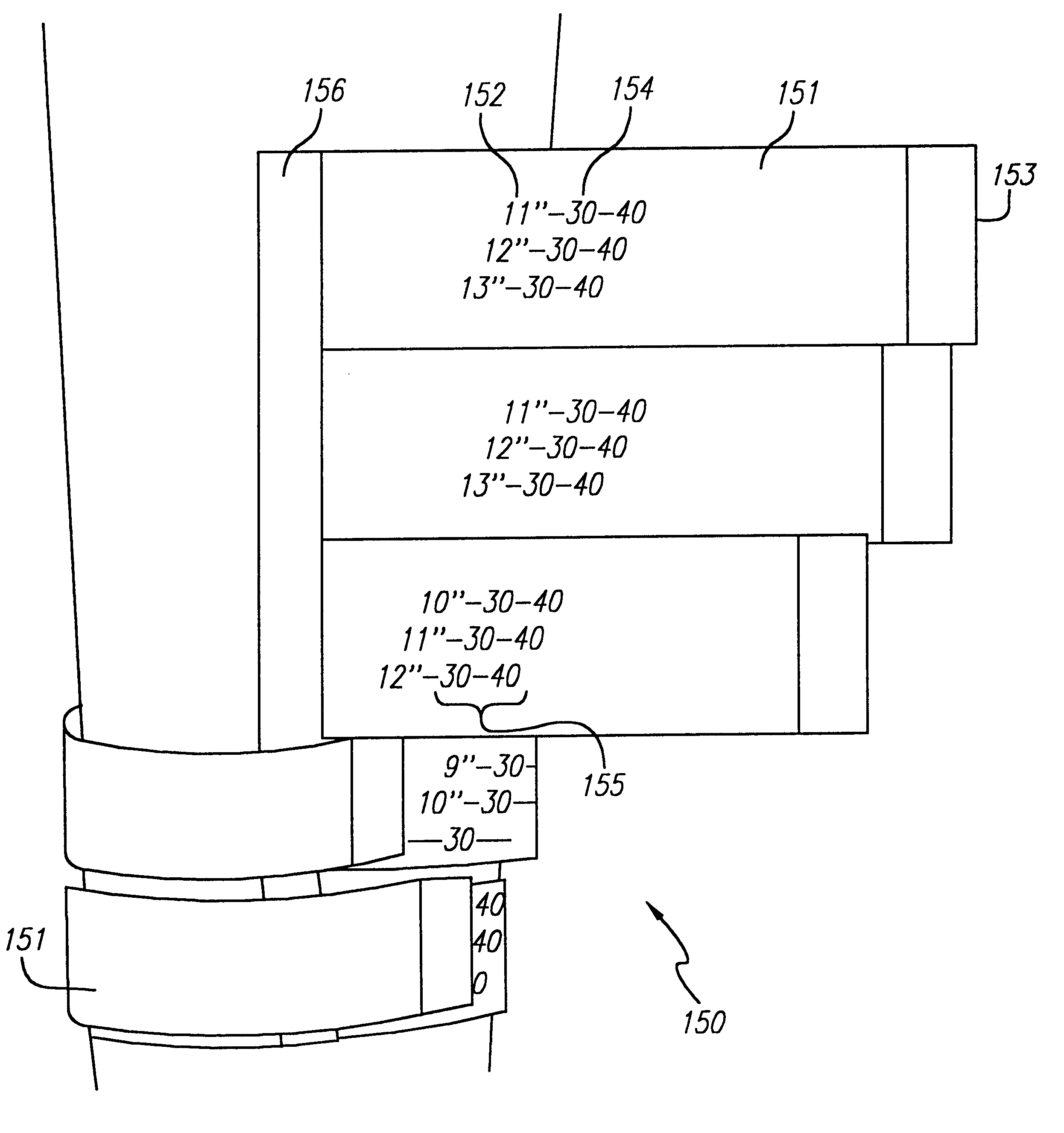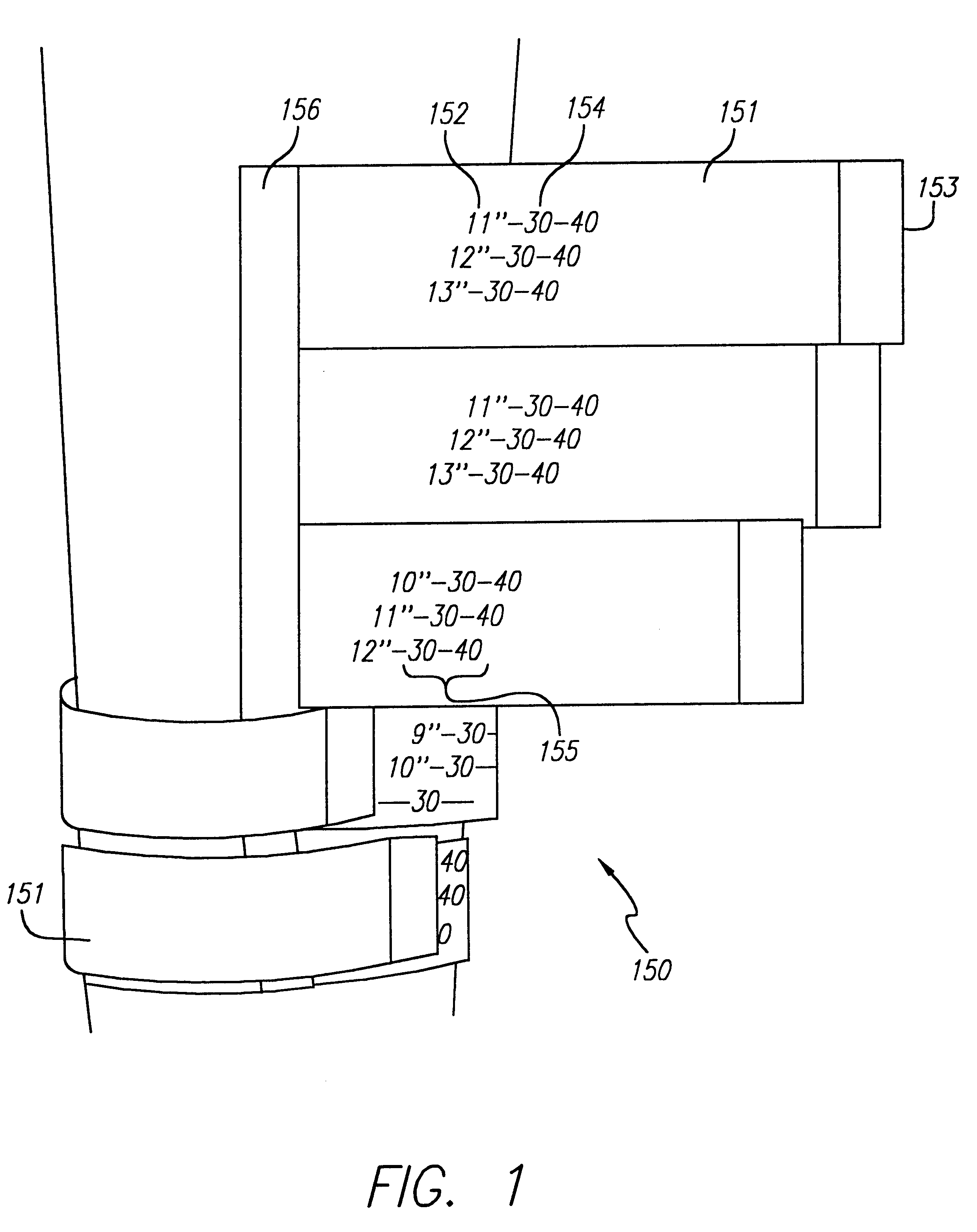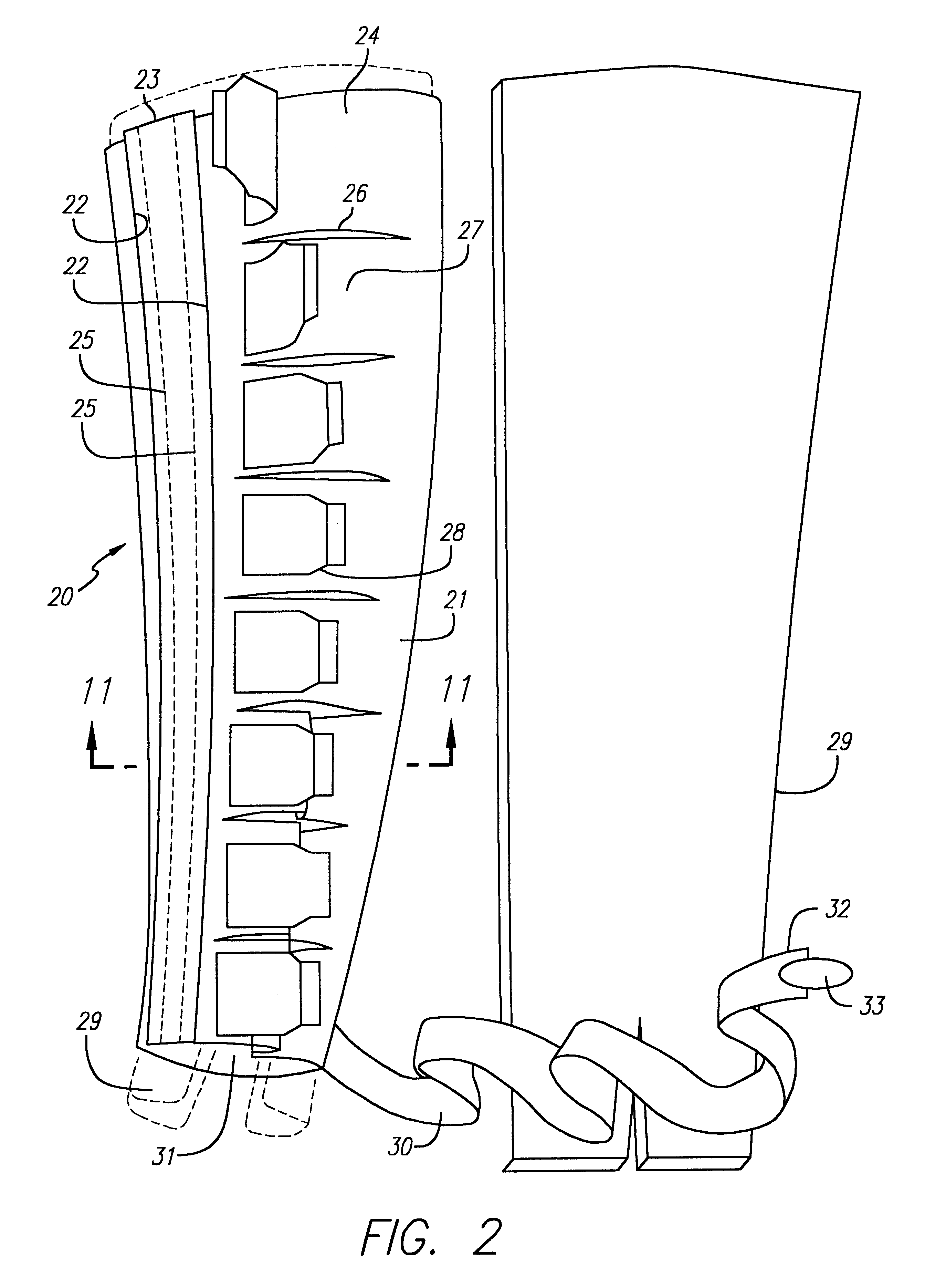Compression device with compression measuring system
a compression device and measuring system technology, applied in the field of compression devices with compression measuring systems, can solve the problems of loss of compression, difficulty in applying and removing elastic stockings, and no integral gauge or system, and achieve the effect of accurately and reliably predicting and measuring compression levels
- Summary
- Abstract
- Description
- Claims
- Application Information
AI Technical Summary
Benefits of technology
Problems solved by technology
Method used
Image
Examples
Embodiment Construction
clinical trial was conducted to test the efficacy of the arm-sleeve embodiment (FIGS. 2 and 10-12) of the present invention. Four individuals participated. Each of these persons had previously had his or her arms bandaged and had used another type of therapeutic compression garment.
An open-ended woven protective garment ("stockinet") was first put on the bare arm ensuring that the stockinet was not bunched up or folded in any way. The stockinet was cut to fit the limb correctly. Then a foam pad 29 was wrapped around the top of the arm under the arm-sleeve taking care that, similarly, it not be folded or twisted. The foam pad 29 was added for protection and comfort of the patient. Finally, the arm-sleeve embodiment 20 was put on over the foam pad 29.
Starting at the distal end, or the end nearest the hand, the first sub-band 27 was tightened around the arm by lifting up the hook fastener 28 by its loose end, pulling the fastener 28 so as to tighten the arm-sleeve 24, and re-attaching ...
PUM
 Login to View More
Login to View More Abstract
Description
Claims
Application Information
 Login to View More
Login to View More - R&D
- Intellectual Property
- Life Sciences
- Materials
- Tech Scout
- Unparalleled Data Quality
- Higher Quality Content
- 60% Fewer Hallucinations
Browse by: Latest US Patents, China's latest patents, Technical Efficacy Thesaurus, Application Domain, Technology Topic, Popular Technical Reports.
© 2025 PatSnap. All rights reserved.Legal|Privacy policy|Modern Slavery Act Transparency Statement|Sitemap|About US| Contact US: help@patsnap.com



